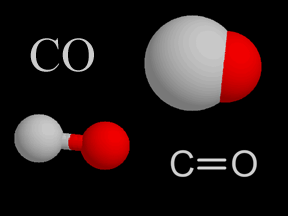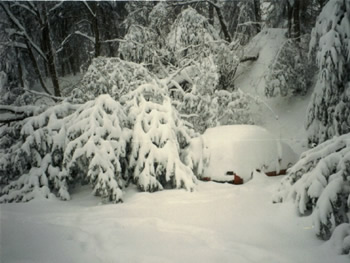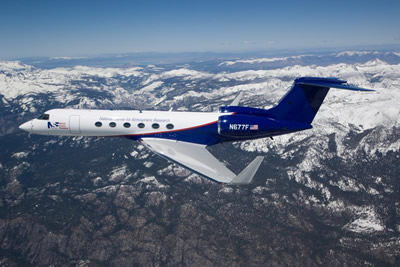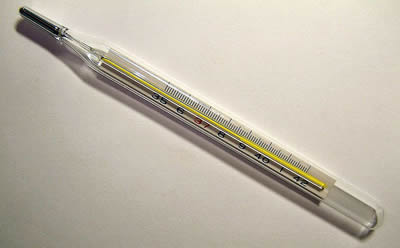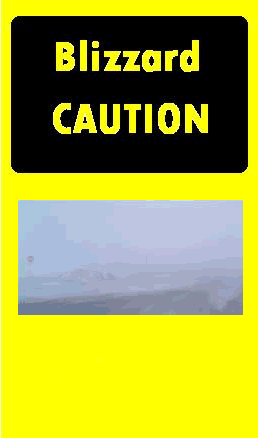
Images Courtesy of: National Weather Service Forecast Office of La Crosse, WI/ Chris Bergeson, NOAA, and National Weather Service Forecast Office of Central Illinois/ Lawrence Estep
Blizzard Safety
Winter storms and blizzards are dangerous. There is a danger at home and on the road. It is important to be prepared. A NOAA Weather Radio or local news station can give information about any watches, warnings, or advisories where you live.
Everyone should try to stay indoors during a blizzard. The electricity can go out because of this kind of weather. It is a good idea to have flashlights and other ways to keep warm. Everyone should try to be in a few rooms of the house or office. Foods that do not have to be refrigerated or cooked are a good idea to have.
Blizzards are dangerous to travel in especially during whiteout conditions. It is best to avoid travel if possible. If a person must travel, then tell them to travel during daylight. It is important because at night the ice on the roads is hard to see. Warm clothing in layers should be worn if traveling during storm conditions to help stay warm. Food and water are also important to have in the vehicle when traveling in this winter season. This is to help if the person gets stuck in their car.
Here are some key tips in case your family gets stuck in their car during a blizzard. For ten minutes every hour, turn on the carís engine and heater to help keep warm. Make sure snow isnít blocking the carís tailpipe where the carbon monoxide gas comes out. Makes sure everyone is wearing warm cloths. If someone finds that it is hard to feel or wiggle his or her fingers or toes, then it is important to get that person warmer. Try to move your arm and legs, especially your hands and feet, to keep warm.







